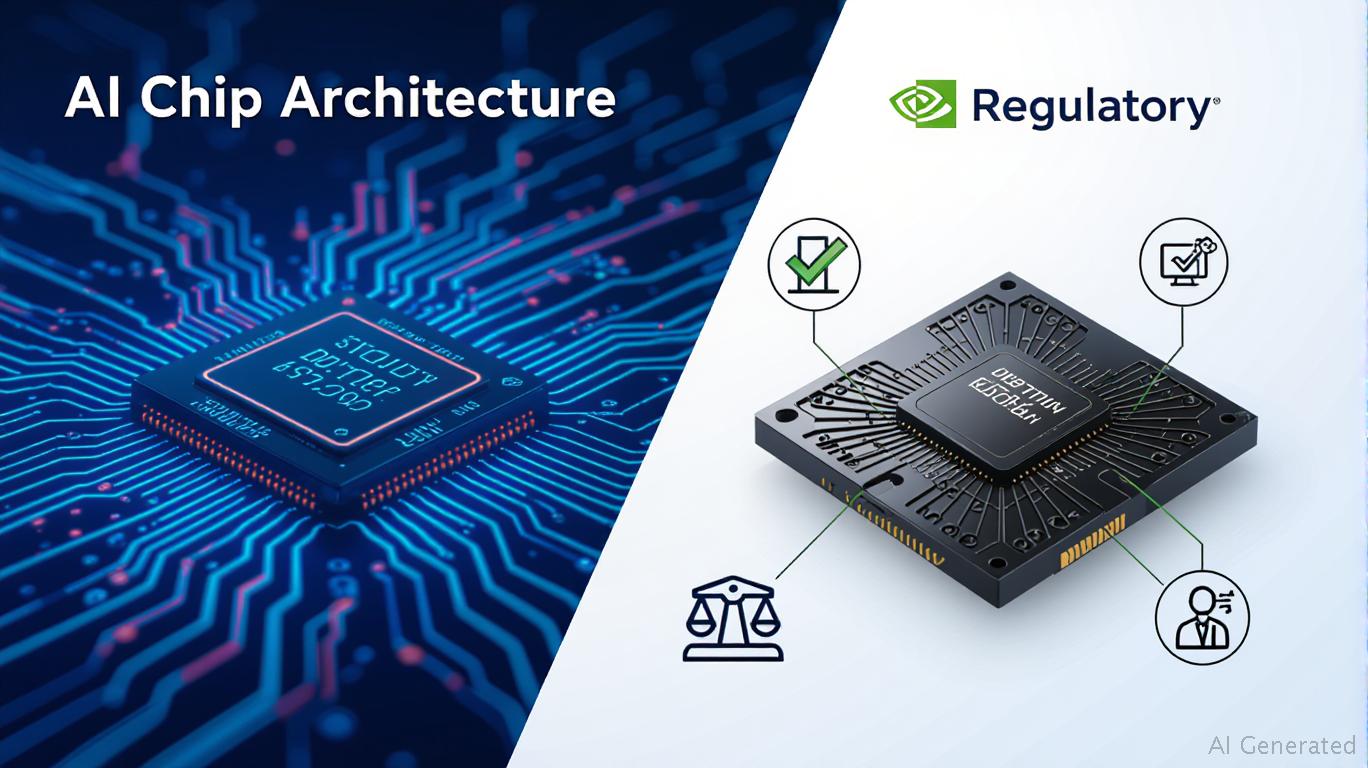Navigating the Regulatory Maze: Why AI-Driven Tech Stocks Are Still a Growth Play
The AI revolution is not slowing down—it's evolving. As companies like
(NVDA) and (NOW) push the boundaries of innovation, they face an equally formidable challenge: navigating a labyrinth of global regulations. From export controls to data privacy laws, the stakes are high. Yet, for investors willing to parse the risks and rewards, these firms offer a compelling opportunity. Let's dissect how these leaders are balancing regulatory headwinds with growth potential.The Regulatory Crossroads: Opportunities in Adversity
The AI landscape in 2025 is defined by a paradox: rapid innovation meets stringent oversight. The EU's AI Act, U.S. export controls, and state-level regulations have created a complex web of compliance requirements. However, these same regulations are also driving consolidation, rewarding companies with robust governance and scalable models.
Key Regulatory Pressures:
- Export Controls (Nvidia): U.S. restrictions on advanced chips to China, while costly, have forced Nvidia to pivot toward Tier 1 allies like Japan and Taiwan, securing long-term contracts.
- Data Privacy (ServiceNow): The EU AI Act mandates transparency for “high-risk” systems, pushing firms to invest in compliance tools like ServiceNow's AI Control Tower.
- AI Safety and Bias: Laws like California's proposed SB 53 require “frontier model” developers to address ethical risks, favoring firms with mature risk frameworks.

Case Study: Nvidia (NVDA)—Dominance Amid Global Constraints
Nvidia's $5.5B writedown due to China chip restrictions underscores the risks of geopolitical tension. Yet, its agility in adapting to regulatory shifts is unmatched:
- Strategic Supply Chain Adjustments:
- Prioritized sales to Tier 1 allies under the new global licensing regime, leveraging the Low Processing Performance (LPP) exception to stay under computational thresholds.
Expanded cloud partnerships in the Middle East, capitalizing on $1.4T UAE tech investments.
R&D as a Competitive Moat:
- Invested in inference-focused AI tools (e.g., Riva for healthcare) to reduce reliance on China's chip smuggling networks.
- Dominance in large-scale model training remains unchallenged, with computational thresholds ($10^{26}$ operations) limiting competition.
Despite volatility, NVDA's stock has rebounded 20% since Q1 2025 as investors bet on its leadership in AI infrastructure. The key takeaway? Regulatory hurdles are temporary—Nvidia's ecosystem control ensures long-term resilience.
Case Study: ServiceNow (NOW)—Compliance as a Competitive Edge
ServiceNow's cloud platform is a prime example of how compliance can drive growth. The firm has transformed regulatory requirements into a selling point:
- EU AI Act Preparedness:
- Launched the EU Protected Platform, ensuring data residency and transparency for high-risk systems.
AI Control Tower tools automate risk classification and documentation, reducing costs for clients in regulated sectors like finance and healthcare.
Partnerships for Scalability:
- Collaborations with EY to orchestrate AI compliance in regulated industries.
- Its Data Fabric integration unifies fragmented IT ecosystems, meeting GDPR and state-level data sovereignty laws.
NOW's revenue has surged 18% YoY, driven by demand for governance tools. The firm's focus on “compliance-as-a-service” positions it to capitalize on the $12B AI governance market by 2027.
Risk Mitigation: How These Firms Stay Ahead
Both companies exemplify strategies to turn regulatory risks into advantages:
- Proactive Compliance: Investing in tools like AI Control Towers reduces legal exposure and operational costs.
- Geopolitical Diversification: Nvidia's pivot to Middle Eastern markets and NOW's EU-focused platforms hedge against China-U.S. tensions.
- Focus on High-Margin, Ethical AI: Shifting toward healthcare, finance, and cybersecurity use cases avoids the scrutiny of consumer-facing AI (e.g., deepfakes).
Investment Outlook: Long-Term Winners in a High-Risk World
For investors, the path forward is clear:
- Buy the Dip on NVDA: Regulatory uncertainty creates short-term volatility, but its $1T market cap and 45% gross margins make it a hold for long-term portfolios.
- Overweight NOW: Its recurring revenue model (85% retention rate) and AI governance leadership offer steady growth amid fragmentation.
Conclusion
The AI sector isn't just about algorithms—it's about governance. Companies that treat compliance as a core competency, like Nvidia and ServiceNow, are not just surviving regulatory storms—they're defining the future. While risks persist, the rewards for investors who bet on resilience are profound. In a world of uncertainty, these stocks are anchors of innovation.
Final Advice: Allocate 5-10% of a tech portfolio to
and NOW, with a 3-5 year horizon. The AI era is here to stay—own the companies building its backbone.Sign up for free to continue reading
By continuing, I agree to the
Market Data Terms of Service and Privacy Statement

Comments
No comments yet